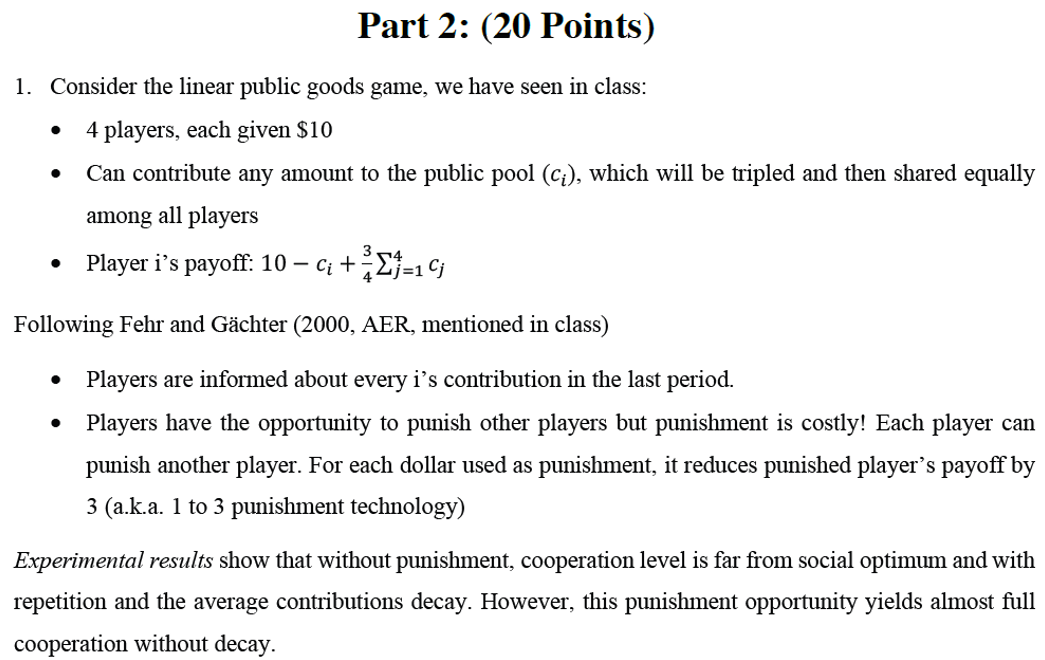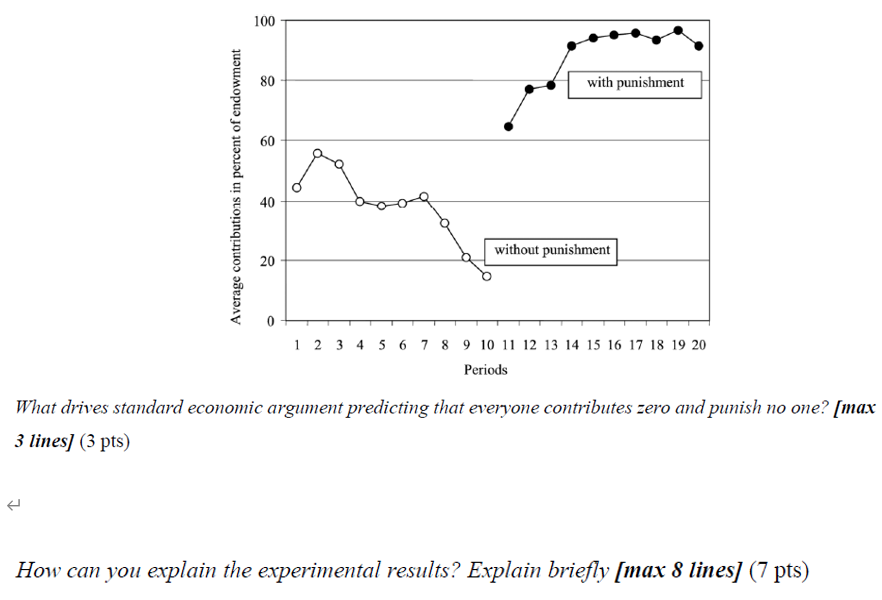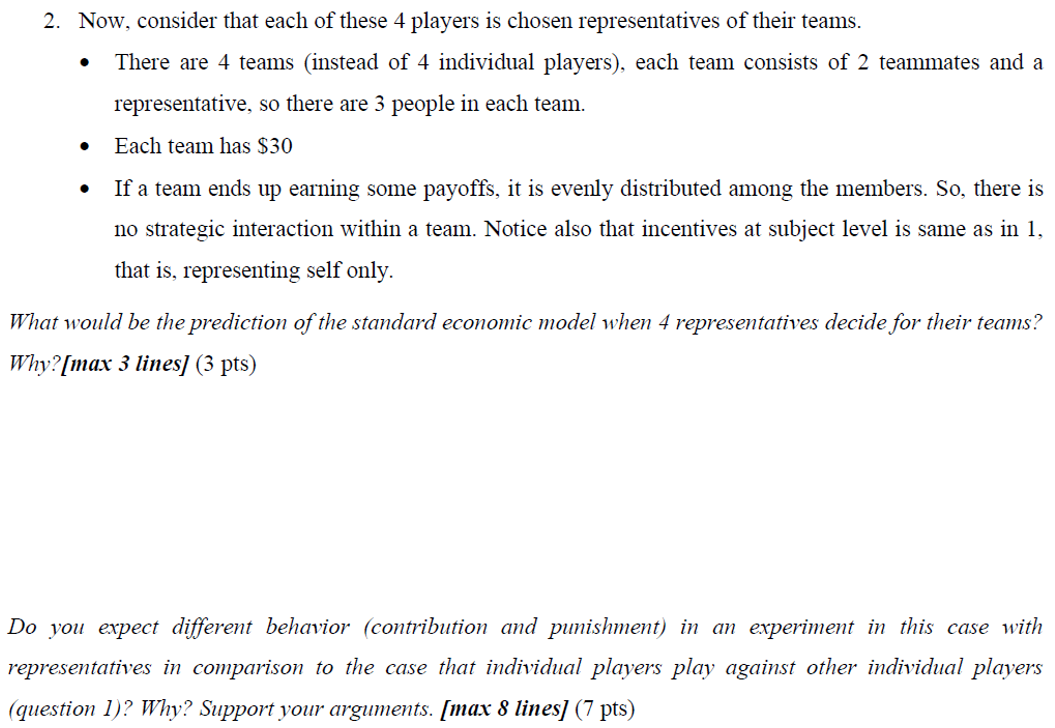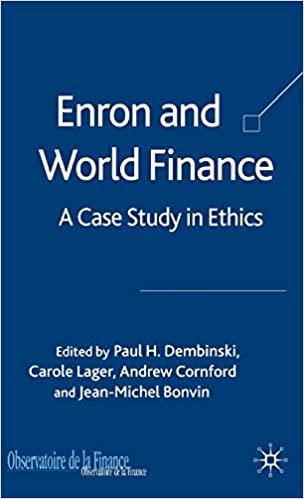


Part 2: (20 Points) 1. Consider the linear public goods game, we have seen in class: 4 players, each given $10 Can contribute any amount to the public pool (c;), which will be tripled and then shared equally among all players Player i's payoff: 10 - C + = Cj 34 j=1 Following Fehr and Gchter (2000, AER, mentioned in class) Players are informed about every i's contribution in the last period. Players have the opportunity to punish other players but punishment is costly! Each player can punish another player. For each dollar used as punishment, it reduces punished player's payoff by 3 (a.k.a. 1 to 3 punishment technology) Experimental results show that without punishment, cooperation level is far from social optimum and with repetition and the average contributions decay. However, this punishment opportunity yields almost full cooperation without decay. 100 80 09 Average contributions in percent of endowment with punishment 40 without punishment 20 1 2 3 4 5 6 7 8 9 10 11 12 13 14 15 16 17 18 19 20 Periods What drives standard economic argument predicting that everyone contributes zero and punish no one? [max 3 lines] (3 pts) How can you explain the experimental results? Explain briefly [max 8 lines] (7 pts) 2. Now, consider that each of these 4 players is chosen representatives of their teams. There are 4 teams (instead of 4 individual players), each team consists of 2 teammates and a representative, so there are 3 people in each team. Each team has $30 If a team ends up earning some payoffs, it is evenly distributed among the members. So, there is no strategic interaction within a team. Notice also that incentives at subject level is same as in 1, that is, representing self only. What would be the prediction of the standard economic model when 4 representatives decide for their teams? Why?[max 3 lines] (3 pts) Do you expect different behavior (contribution and punishment) in an experiment in this case with representatives in comparison to the case that individual players play against other individual players (question 1)? Why? Support your arguments. [max 8 lines] (7 pts) Part 2: (20 Points) 1. Consider the linear public goods game, we have seen in class: 4 players, each given $10 Can contribute any amount to the public pool (c;), which will be tripled and then shared equally among all players Player i's payoff: 10 - C + = Cj 34 j=1 Following Fehr and Gchter (2000, AER, mentioned in class) Players are informed about every i's contribution in the last period. Players have the opportunity to punish other players but punishment is costly! Each player can punish another player. For each dollar used as punishment, it reduces punished player's payoff by 3 (a.k.a. 1 to 3 punishment technology) Experimental results show that without punishment, cooperation level is far from social optimum and with repetition and the average contributions decay. However, this punishment opportunity yields almost full cooperation without decay. 100 80 09 Average contributions in percent of endowment with punishment 40 without punishment 20 1 2 3 4 5 6 7 8 9 10 11 12 13 14 15 16 17 18 19 20 Periods What drives standard economic argument predicting that everyone contributes zero and punish no one? [max 3 lines] (3 pts) How can you explain the experimental results? Explain briefly [max 8 lines] (7 pts) 2. Now, consider that each of these 4 players is chosen representatives of their teams. There are 4 teams (instead of 4 individual players), each team consists of 2 teammates and a representative, so there are 3 people in each team. Each team has $30 If a team ends up earning some payoffs, it is evenly distributed among the members. So, there is no strategic interaction within a team. Notice also that incentives at subject level is same as in 1, that is, representing self only. What would be the prediction of the standard economic model when 4 representatives decide for their teams? Why?[max 3 lines] (3 pts) Do you expect different behavior (contribution and punishment) in an experiment in this case with representatives in comparison to the case that individual players play against other individual players (question 1)? Why? Support your arguments. [max 8 lines] (7 pts)









